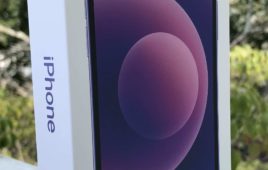The FCC has proposed taking action to directly combat robocalls that spoof legitimate phone numbers by allowing voice providers to block these nuisance calls by default, rather than requiring consumers to opt-in.
The commission will vote on the proposed declaratory ruling at its June 6 meeting.
FCC Chairman Ajit Pai said the decision would give service providers more certainty about proactive blocking of calls – currently customers have to either opt-in with their service provider or rely on third-party apps to help stop the barrage of robocalls.
“Allowing call blocking by default could be a big benefit for consumers who are sick and tired of robocalls. By making it clear that such call blocking is allowed, the FCC will give voice service providers the legal certainty they need to block unwanted calls from the outset so that consumers never have to get them,” said Pai. “And, if this decision is adopted, I strongly encourage carriers to begin providing these services by default—for free—to their current and future customers. I hope my colleagues will join me in supporting this latest attack on unwanted robocalls and spoofing.”
Voice providers would not be required to deliver these services or provide them for free, but as much of a consumer pain point as robocalls are, it is likely operators would want to implement them.
Under the ruling, consumers would also have the option to opt out of the call-blocking program, or alternatively, opt-in for more aggressive services. The FCC indicated consumers could choose to have their service provider block any calls originating from numbers not included in their contact list.
The decision would also give service providers options as to how to handle robocalls, for example, sending the call straight to voicemail, alerting the customer that the call is likely scam, or blocking it altogether.
While the FCC has previously called on major service providers to implement caller ID authentication standards knowns as SHAKEN/STIR this year, the proposed declaratory ruling would be the commission’s first direct action to combat scam robocalls that spoof legitimate, in-service phone numbers.
As robocalls continue to plague consumers, service providers and government agencies have been under increasing pressure to address the issue.
Earlier this year AT&T and Comcast announced the first exchange of authenticated calls between two separate providers using SHAKEN/STIR.
In March, T-Mobile expanded its free ‘Caller Verified’ scam protection service to seven additional devices. The next month, T-Mobile and Comcast announced the first customer-facing display showing verified calls between different providers’ networks.
Comcast SVP and General Manager of Broadband and Communications Services Eric Shaefer applauded Pai’s announcement.
“Chairman Pai’s leadership in the fight to protect Americans from fraudulent robocalls is vital to winning the war on unwanted calls. His announcement today that he is sending his fellow commissioners proposed actions to empower voice providers to implement default robocall blocking is great news for consumers,” commented Schaefer. “We will have another tool that will permit us to protect our customers by stopping illegal robocalls before they reach our customers’ phones.”




